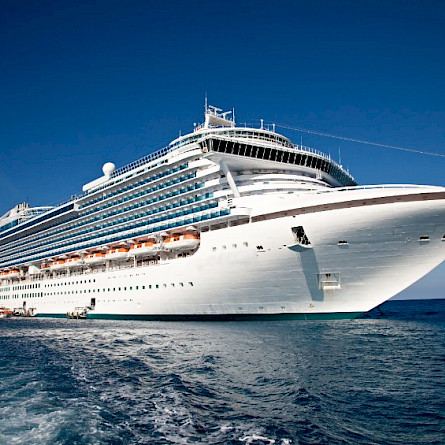One of the points we discussed was that of the level of indebtedness. Here is my opinion on a very important element to consider when analyzing a security. Note that it applies as much to cruise lines as to any other industry.
Debt level
To simplify, let’s use the case of Carnival, the largest company in the sector. On its most recent balance sheet, it held US$28 billion in net debt. The company’s earnings are currently depressed due to the pandemic, but we believe it should return to profitability in the coming quarters.
In 2019, its best year ever, Carnival generated operating profits (EBITDA) of US$5.5 billion. If it succeeded in repeating this performance, Carnival would have a net debt-to-EBITDA ratio of 5.0. In other words, if it allocated all of its profits to this purpose, it would not be able to pay off all of its debt for at least five years. This assumption does not even consider the interest to be paid. In simpler terms, Carnival’s level of debt is very high.
Problems
A high debt level leads to various problems for a company. First, it hinders growth. For example, heavily indebted companies can hardly invest in advertising or research and development. Moreover, growth through acquisitions is probably not a possible strategy in their case. Indebted companies therefore have little flexibility; they mainly manage their costs and not growth.
A large proportion of the profits of an indebted company are used to pay the interest on its debt. In the case of Carnival, it will have to pay nearly US$1.6 billion in interest annually. Imagine having full credit cards and paying high interest; it then becomes very difficult to get out of it since most of one’s cash is directed towards debts.
A debt-laden company also has little room to manoeuvre in the event of an interest rate hike. The recent rate hike affects Carnival since part of its debt is at variable rates. In addition to paying more interest, it will have to refinance at even higher rates. Carnival’s most recent debt was issued at a rate of 10.5%.
In a situation where debt financing becomes difficult, a heavily indebted company could be forced to issue shares at a low price. This appears to be the case with Carnival, which just announced the issuance of 117 million shares at a price of $9.95 per share. Such an issue is problematic for existing investors since it dilutes their ownership by almost 10%. Dilution reduces each shareholder’s slice of the pie.
Bankruptcy
Indebted companies always run the risk of going bankrupt. I often hear that cruise lines can hardly go bankrupt, because who wants to take back dozens of boats. Creditors will surely accommodate a cruise line, right?
Accommodations happen in some cases, but not all the time. Just because a company goes bankrupt does not necessarily mean it ceases to exist.
Imagine that you own a restaurant. You have employees, equipment, and a building. If you go bankrupt, a new investor could decide to buy the restaurant and continue its operations. Employees, equipment, and the building remain unchanged. It is the owner who changes.
The same principle applies to the stock market. In the event of a bankruptcy, the boats and the employees could remain in place. It is the owners who are likely to change. But who are the owners? The shareholders of the company.
A few examples of bankruptcy come to mind. In the United States, I am thinking of General Motors (GM) and of Six Flags Entertainment (SIX), the owners of La Ronde in Montreal, both of which went bankrupt in 2009. In Canada, the bankruptcy of Air Canada (AC) in 2003 is another good example. Despite their bankruptcy, these companies still exist.
When a company goes bankrupt, the stock is usually taken off the exchange and a new public offering is initiated. New investors will come to inject cash into the business, which will be used to restructure the business. The operations will survive, but the shareholders will generally have lost everything.
Mitigate the risks
Given the risks and problems caused by debt, we prefer companies with little or no debt. A company without debt can hardly go bankrupt.
You also have to separate things. Debt can be beneficial if managed well. The level of debt should be assessed based on the business model, as some companies can sustain a relatively high level of debt.
In closing, I am not predicting a bankruptcy for Carnival or its competitors. I only note that their level of debt is high and that is likely to remain so for several years. Rising rates and the likelihood of a recession will not improve their situation.
Carnival’s stock could continue its fall, or it could rebound quickly, I have no idea. Indebted companies that manage to get out of it can generate attractive returns. On the other hand, I am convinced that the level of risk associated with high leverage reduces the probability that this type of investment will be successful.
Jean-Philippe Legault, CFA
Financial analyst





